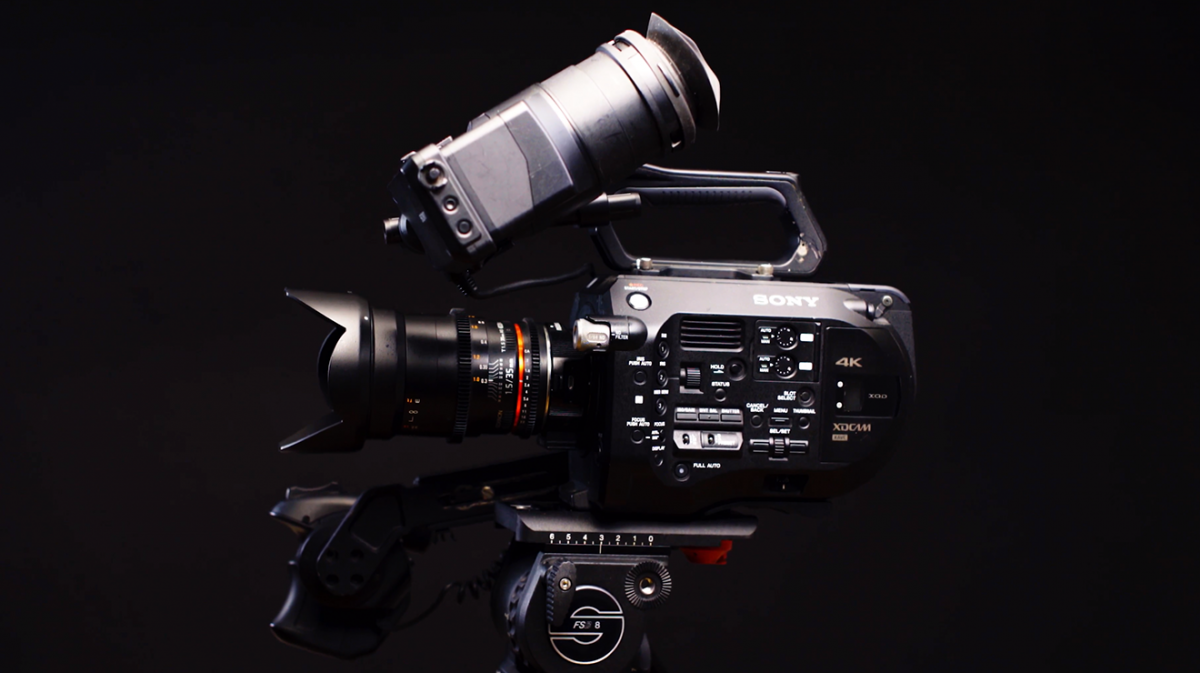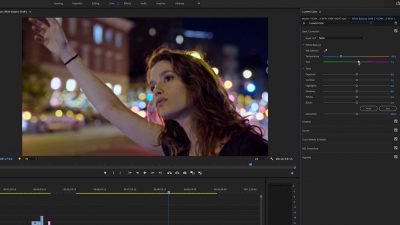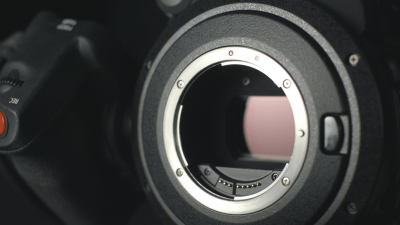When it comes to picking a video camera, it’s not just about image quality. The camera also has to offer the type of battery life, audio inputs, video outputs, ergonomics, and image control options to suit your project.
In this episode of our How To Video: Camera series, we’ll walk you through what you can expect from different tiers of video cameras for each of those five factors. We’ll also explain why each one is important to consider when selecting a camera for your project.
Video Camera Technology
Cameras are incredibly complex, and they’re packed with features. So, how do you know which features really matter?
Nick LaClair has the answer in this episode of our How To Video: Camera series. He dissects the five major categories of camera features, and identifies what separates professional cameras from consumer options. Watch the video below to learn what really counts when it comes to camera features.
1. Battery Capacity
Battery capacity is very important to keep in mind as you’re filming. It varies tremendously across types of cameras.
As you go up the chain, battery capacity increases from consumer cameras, up until professional camcorders. Since cinema rigs are so powerful, they require a lot of, well, power. Battery life tends to be short, and batteries tend to be very large and pricey for these models.
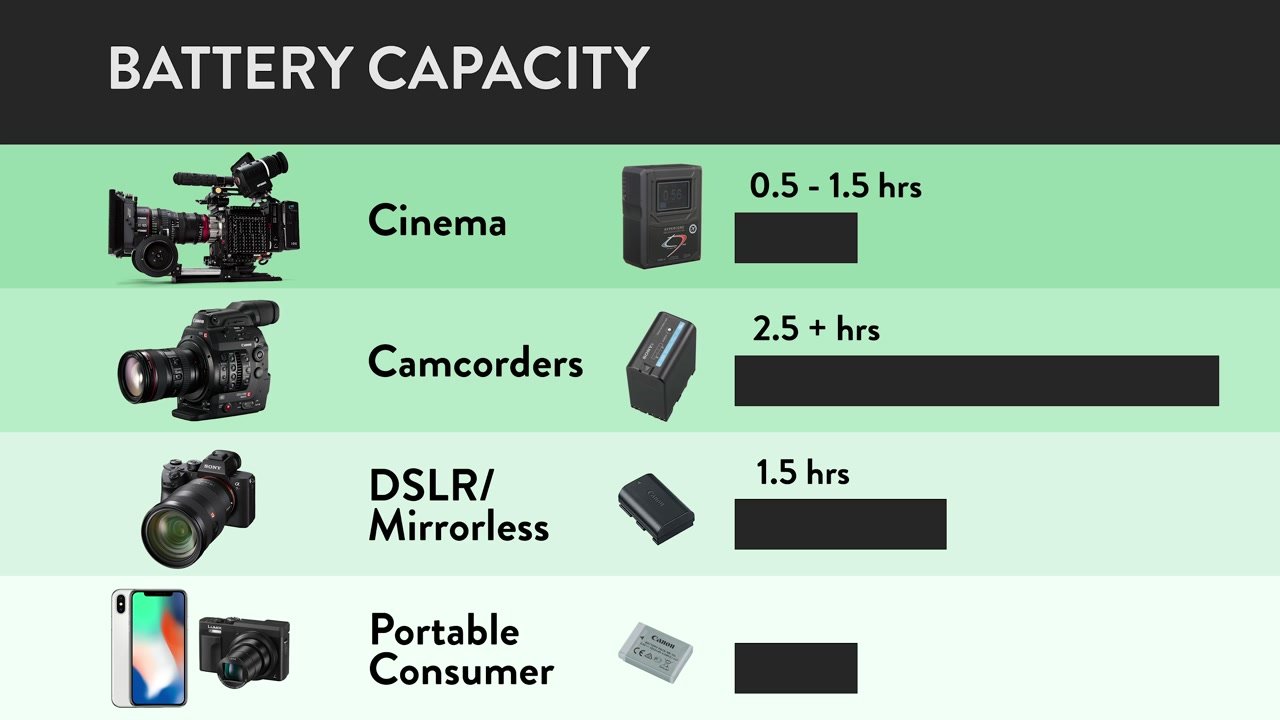
Of course, there’s an easy solution for extending your shoot. Bring fully charged extra batteries and a charger, and rotate your batteries in and out as needed. Just keep in mind that charging a large battery can take several hours.
2. Audio Inputs
Lower end cameras typically only accept one audio source, and usually from an 1/8th inch audio jack. This type of audio jack limits the range of microphones you can pick from, and usually doesn’t deliver as high quality sound when compared to XLR audio inputs.
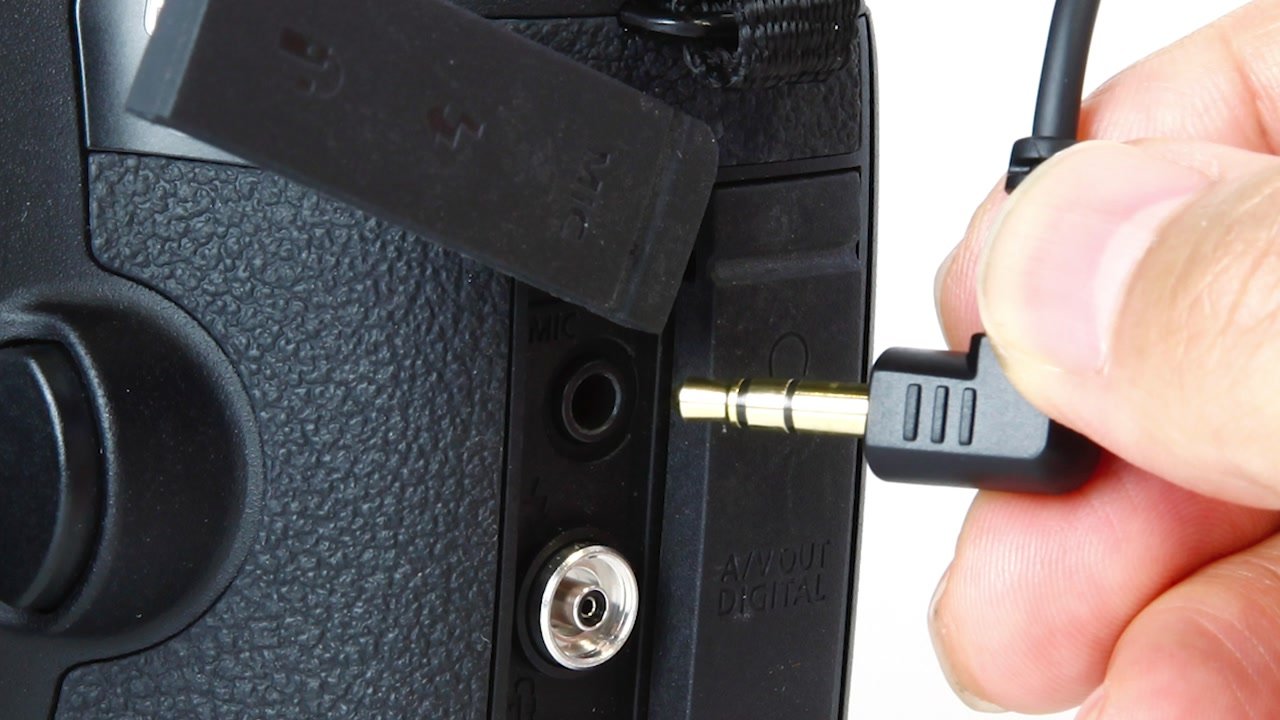
On the other hand, camcorders and cinema rigs accept XLR audio inputs. This type of input provides balanced audio without what is known as cable interference. Cable interference refers to distortion or similar noise issues that certain types of cables can introduce. As a general rule, XLR inputs will give you cleaner audio than 1/8th inch audio jacks.
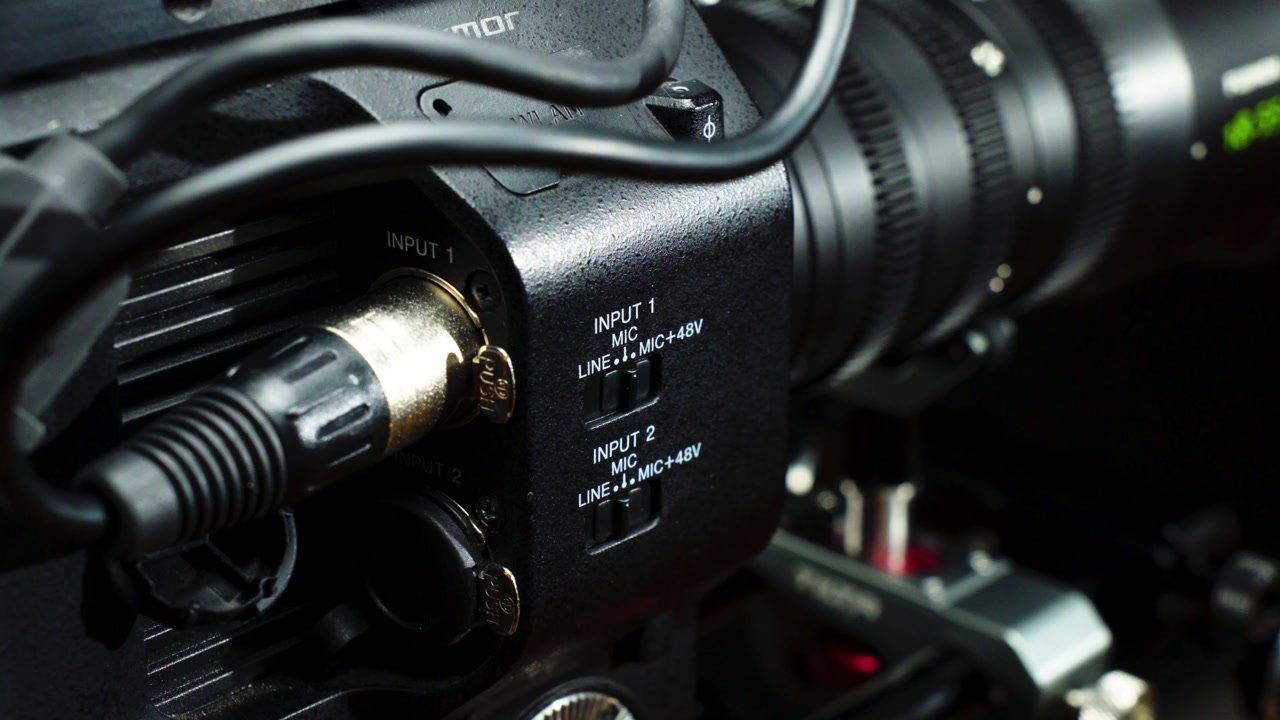
XLR audio inputs have the additional benefit of providing phantom power for microphones that require it. Some microphones take batteries, while others are powered by the XLR cable if the camera supports it. Offering phantom power opens up the ability to use different mics, and is typically a more professional choice.
Microphone Mounts
Camcorders typically offer a mount for a shotgun microphone. An on-camera mic is a convenient way to capture audio if you aren’t able to use a boom mic.
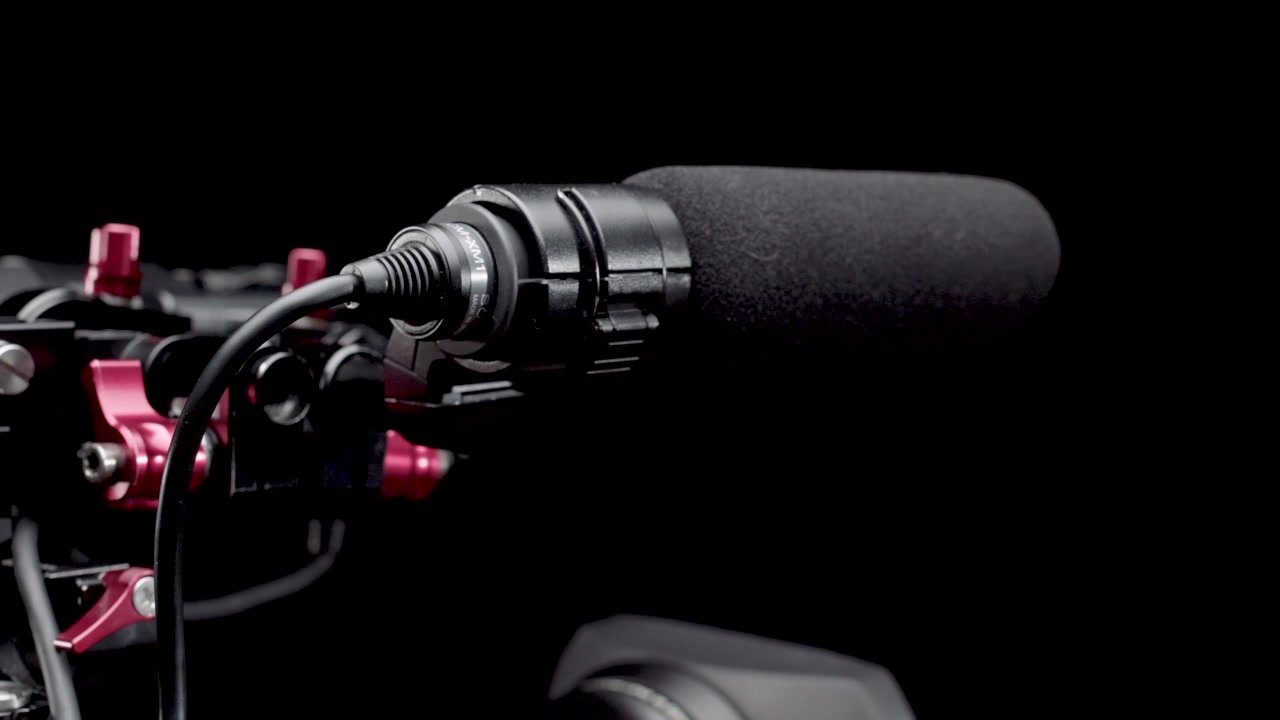
In comparison, DSLR cameras only allow you to use a hot shoe microphone. While small and easy to use, hot shoe mics won’t deliver the same sound quality that a full-size professional shotgun mic can.
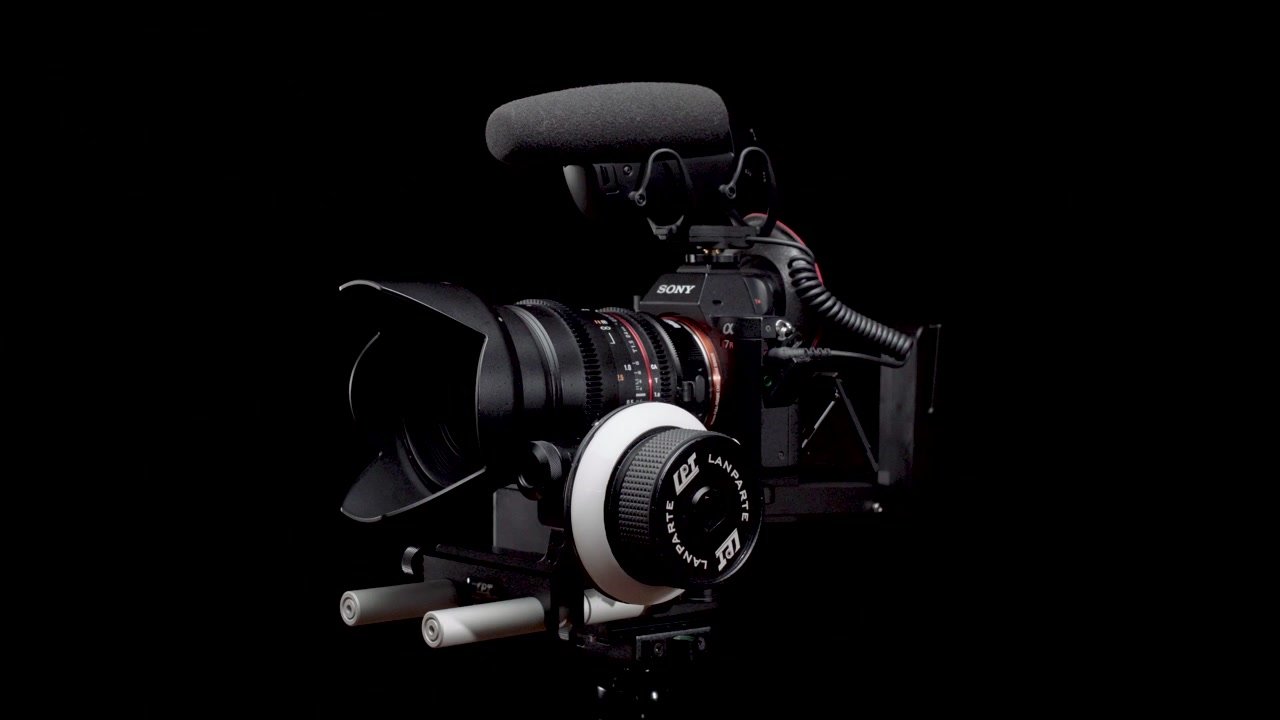
3. Video Outputs
Lower end cameras only include one HDMI output, which can be limiting. HDMI connectors are fragile and break easily, and are limited in terms of the distance of cable through which you can run a signal.
Instead of HDMI, SDI cables are industry standard. Camcorders typically offer multiple options, including both SDI and HDMI, whereas cinema rigs usually offer multiple SDI outputs.
The number of outputs matters most when you have more than one team that requires its own video feed during a shoot. If you’re a single person filming, this likely isn’t a factor for you.
However, if you are on a large production team, you will definitely care about the number of outputs you have available. For example, you will likely want an on-camera monitor, plus another for the director, and another for clients elsewhere in the room.
Also, when there are multiple video outputs, each one usually outputs something different. For instance, one might output all the visual information displayed on the screen (such as lens info, etc.), which is useful for the camera operator. Then, the second output could just be the image. That’s useful for the client or other parties who don’t need to see all that extra info.
4. Ergonomics
Consumer cameras are extremely basic, in that they aren’t particularly customizable. Typically, you can’t even change lenses, though some offer slightly more adaptable features, like movable viewfinders.
Mirrorless and DSLR cameras are perfect for photography, but lack a lot of features required for pro video. Interchangeable lenses are available, but since these small cameras are designed for portability and still images, they lack convenient features like handles and external options for settings.
The most complete, out of the box solution is a professional camcorder. They have handles for handheld work, and offer easily accessible external adjustments that aren’t buried in the menu. They usually also have on-camera monitors or viewfinders that are large, bright, and adjustable.
Similar to the first two categories, cinema rigs aren’t as well equipped out of the box, which has its pluses and minuses. They require thousands of dollars of add-ons to get the same functionality. However, you’ll have a highly customized solution when you’re done configuring your rig.

5. Image Control
Finally, there’s image control. Neutral density filters (known as ND filters) and signal monitors are important tools for videographers.
While in photography you use ISO, shutter speed, and aperture to change the exposure of your image, in videography, your shutter is locked in place. So to bring your exposure down past where your aperture or ISO can go, you need a ND filter.
Consumer cameras only give you histograms for image control, which is a tool designed primarily for photographers.
Only camcorders offer internal ND filters for controlling exposure. Camcorders and cinema cameras include other tools like a waveform monitor and a vectorscope, which give you a lot more information about the image you’re recording.
While a histogram will give you a general idea of the brightness of your image, waveforms will give you exposure values for specific areas of your frame. This is handy in case you need to know how bright that window’s getting, or how dark the shadows are below it. A vectorscope will give you an idea of color values, which are useful for dialing in the correct white balance.
The advanced image control functionality of higher end cameras allow you to more precisely capture the image the way you want.
Each of these five factors is key to understand to get to grips with the video camera of your choice. Questions about choosing the right camera for your project? Get expert advice in the comments below.



